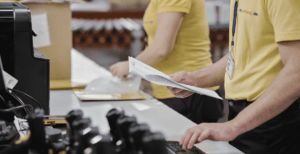
As technology continues to advance, the importance of user experience (UX) in product design becomes increasingly crucial. In today’s highly competitive market, having a good UX is no longer just a nice-to-have feature – it has become a necessity for businesses to stay relevant and successful.
User Experience (UX) design serves as the linchpin that bridges the gap between a product’s functionality and its reception by end-users.
But what exactly is UX? User experience encompasses a holistic approach to designing, ensuring that every interaction a user has with a product is not just seamless but also delightful. In essence, the significance of UX design lies in its ability to create products that are not only visually appealing but also highly functional and intuitive. Beyond aesthetics, UX design addresses the human aspect of technology, considering the emotions, perceptions, and behaviors of users. A well-crafted UX is like a silent guide that navigates users through a product effortlessly, leaving them satisfied and, more importantly, eager to return.
Key Aspects of UX Design in Product Design
1. Usability:
UX design focuses on making products easy to use, facilitating seamless navigation through interfaces with minimal friction. Intuitive navigation and clear user interfaces play a pivotal role in delivering a positive user experience.
2. Accessibility:
When designing the user experience, it is crucial to adopt an inclusive approach that takes into account the diverse needs of users. This ensures that the product remains accessible to everyone, regardless of their abilities or disabilities.
3. Delightful Interactions:
The goal of UX design is to go beyond mere functionality and craft delightful interactions, nurturing a positive emotional bond between users and the product. This is achieved by carefully curating user experiences that are not only enjoyable but also intuitive and seamless, resulting in a truly captivating and satisfying journey.
4. User-Centered Design:
By placing users at the heart of the design process, it should ensure that the final product not only meets their requirements but also surpasses their expectations.
5. Iterative Improvement:
User experience (UX) design entails an ongoing process of iteration and enhancement driven by valuable user feedback. This iterative approach ensures that the product evolves in line with changing user preferences, resulting in a more refined and user-centric experience.

The Impact of Good UX Design for Product Development
Good UX design has a significant impact on the success of a product. By prioritizing user needs and creating an intuitive and enjoyable experience, designers can increase user satisfaction, retention, and even conversion rates. Additionally, good UX design can help differentiate a product from competitors and create a positive brand image that resonates with users. In today’s highly competitive market, where users have endless options, good UX design can be the differentiating factor that sets a product apart.
Here are some reasons why good UX is so important in product design:
First Impressions Matter
In today’s fast-paced world, users have a shorter attention span and a plethora of options to choose from. This makes it crucial for products to make a good first impression, as it can determine whether a user will continue using the product or not. A well-designed and intuitive interface can quickly capture a user’s attention and make them want to explore further.
Increases User Retention
User retention refers to the ability of a product or service to retain its users over time. Good UX design plays a crucial role in this by creating an enjoyable and seamless experience for users.
When users have a positive experience with a product, they are more likely to engage with it for longer periods, giving businesses an opportunity to build relationships and create brand loyalty. By keeping users satisfied, businesses can increase their chances of retaining them and reducing churn.
Boosts Customer Satisfaction
A satisfied customer is a happy customer. Good UX plays a significant role in ensuring that customers have a positive experience with a product or service. When users are satisfied with their experience, they are more likely to continue using the product and even recommend it to others, leading to increased customer retention and acquisition.
Reduces Costs and Increases Revenue
Investing in good UX may seem like an added cost, but it can actually save businesses money in the long run. By providing a seamless and intuitive user experience, companies can reduce the need for costly customer support and training programs. Additionally, customers are more likely to purchase products or services that they find easy to use and navigate, leading to increased revenue for businesses.
Differentiate From Competitors
In today’s competitive market, having a good product is not enough. A well-designed UX can set a product apart from its competitors and give it a unique selling point. Customers are more likely to choose a product that offers a better user experience over one that is difficult or frustrating to use.
Enhances Overall Brand Image
User experience is now a key factor in shaping a brand’s image. A positive and seamless UX can create a good impression of a company and its products, leading to increased brand loyalty and customer trust. On the other hand, a poor user experience can damage a brand’s reputation and drive customers away.
Drives Conversions
A well-designed UX can greatly impact conversion rates by making it easier for users to complete desired actions, such as making a purchase or signing up for a service. By streamlining the user journey and removing barriers, businesses can increase their conversion rates and ultimately drive revenue.
The significance of good user experience design cannot be emphasized enough when it comes to hardware products. It forms the foundation of a successful product, making a substantial impact on a company’s overall success. A well-thought-out and expertly executed UX design not only enhances user satisfaction but also drives innovation, improves efficiency, saves costs, and fosters brand loyalty. Therefore, investing in UX design is imperative for businesses striving to excel in the ever-evolving hardware industry.
Please refer to this article to delve into the crucial role of user experience (UX) in the broader context of achieving business success.




